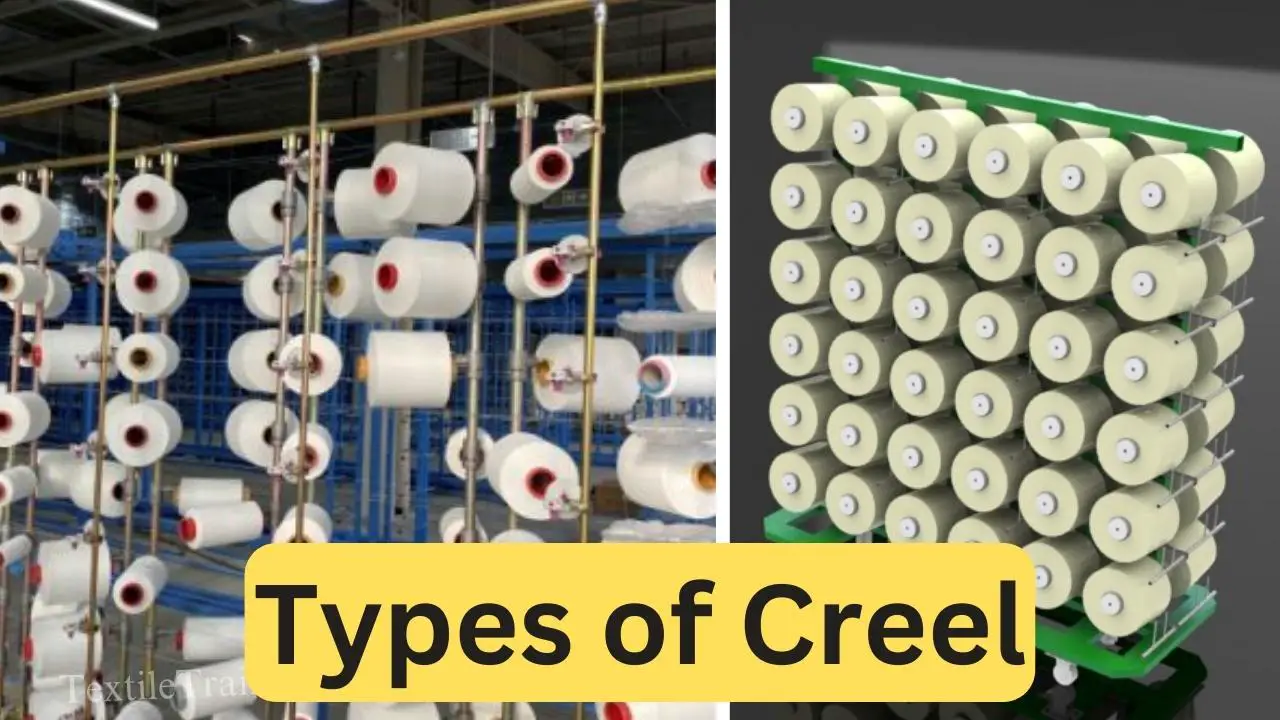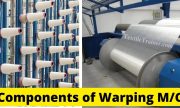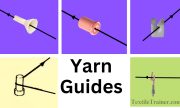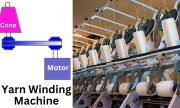Introduction:
During the warping process, the creel is vital in ensuring a smooth and organized yarn-handling process. Types of creel of warping machines is described easy way in this article. As a support system for yarn cones and packages, creel provides stability and accessibility. Creels often contain multiple levels or sections, each holding a specific number of yarn cones or packages. This arrangement ensures that the yarn for warping is easily accessed. An essential function of the creel is preventing yarn tangling and providing smooth feeding to the warping machine. In order to avoid any disruptions or irregularities during the warping process, the yarn is threaded through guides or tensioning devices attached to the creel. This ensures that the yarn feeds evenly and avoids any disruptions or irregularities. Moreover, the creel facilitates the organization and sequencing of yarn. The yarn cones or packages are arranged within the creel in a predetermined order, aligned with the warp sheet arrangement or pattern. By organizing the yarn, we can handle it efficiently and produce a uniform and well-structured warp beam.
In order to ensure the smooth and efficient operation of the warping machine, the creel plays an essential role in providing stability, accessibility, and organization. In addition to supporting and guiding the yarn, it plays a crucial role in ensuring high-quality warp beams, which are essential to subsequent weaving processes and textile product quality.
Types of creel of warping machines:
There are various types of creels. The most common types of creel of warping machines are the following:
- Parallel standard creel with fixed package frame ( single end creel)
- Parallel creel with package trucks.
- Parallel creel with swiveling package frame sections( for cotton, viscose, polyester/cotton, wool colored).
- Parallel creel with reserve packages (magazine creel, for synthetic filaments)
- Parallel creel with unrolling draw-off for polypropylene, monofilaments.
- V-creel with reversible frames.
- V-creel with reversible frames and automatic knotter (for cotton, viscose, polyester/cotton)
- V-creel with raveling packages.
The following types of creels of warping machines can be obtained by combining all the types of creels that have been mentioned above. These are:
- Single ends creel.
- Magazine creel.
- V-creel.
- Rectangular creel.
- Continuous chain creel.
- Automatic creel.
- Swivel frame creel.
- Mobile creel.
- Unrolling creel.
- Rotating creel.
Let me take you through the descriptions of each types of creel of warping machines in detail by providing you with detailed images
1. Single end creel:
Typically, single end creels have one package per warp end. Since creeling is time-consuming, the package size should be so that a large number of beams can be made from a single creel. Using more than one creel is common so that once one creel runs out, the next one is readily available to continue warping. It is done by moving the headstock or creels, depending on the space requirements. When the headstock moves, two creels are usually used, called duplicated creels. When the headstock is fixed, two creels will be enough, but a third creel place is needed to move the empty creel.
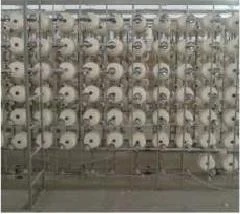
2. Magazine creel:
A magazine creel usually consists of two packages. The running package’s tail end is attached to the reserve package’s leading end, allowing continuous warping operation. By using a yarn splicer, knots can be avoided. Usually, a magazine creel has two pivoting spindles: a working spindle and a reserve spindle. The empty packages from the reserve spindle are removed when one set of spindles is operating, and new packages are inserted. The creels can be loaded from the inside or outside of the aisle and are ideal for unwinding long yarns, unwrapping packages without yarn measurements, or residual unwrapping packages.
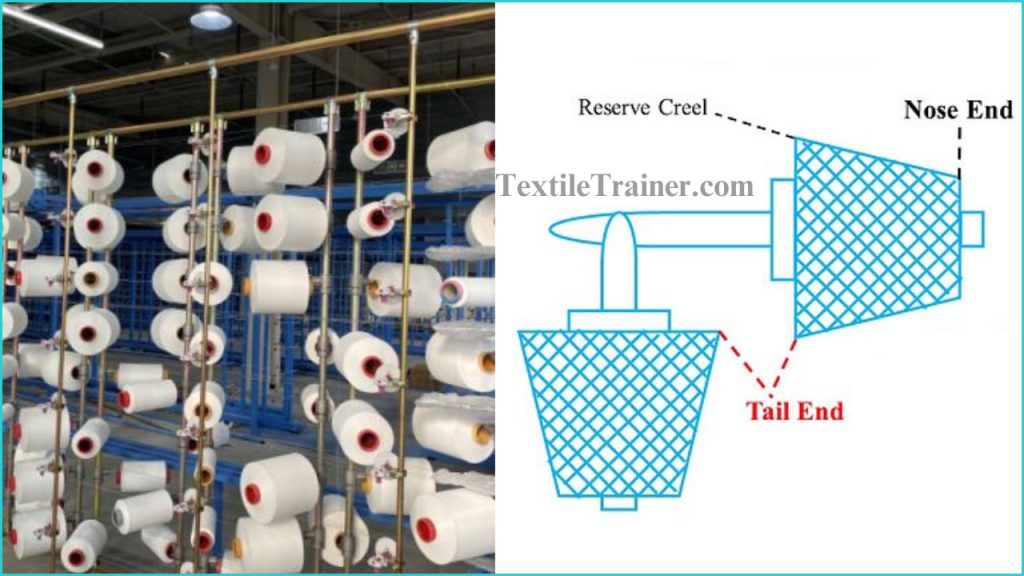
3. V-creel:
A V-creel is a specific type of creel used in the textile industry for holding and organizing yarn cones or packages. The yarn support arms are arranged in a V shape, making it ideal for efficient space utilization and easy access to yarn. In a V-creel, yarn support arms are angled at an angle, resulting in a V shape from above. They hold multiple yarns in the cones or packages, and the arms are positioned at an angle. Packages of 540 ends are available for each column.
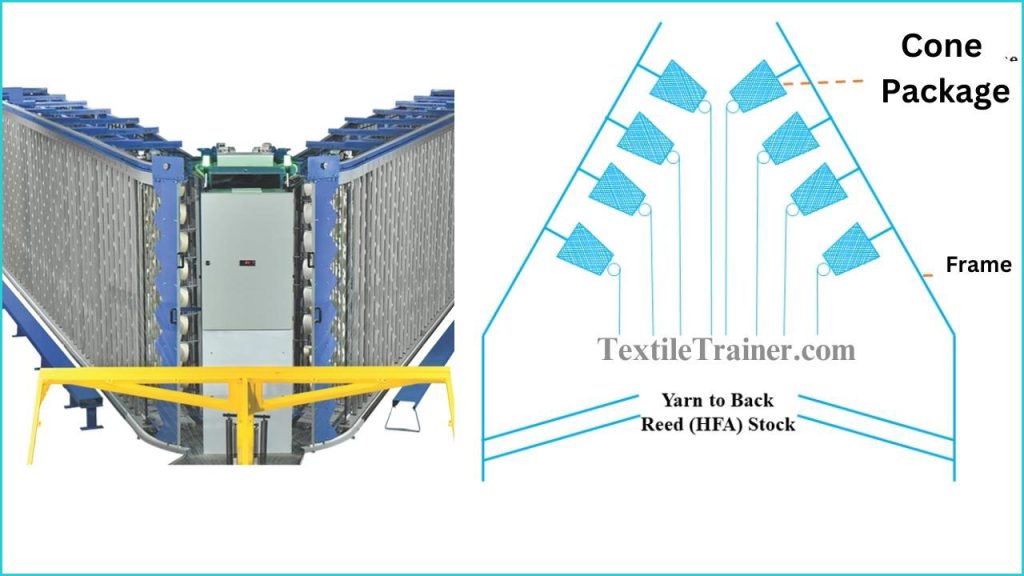
4. Rectangular creel:
Rectangular creels are commonly used in the textile industry for holding and organizing yarn cones or packages. Unlike the V-creel with inclined arms, rectangular creels have traditional rectangular shapes. The yarn support arms of a rectangular creel are arranged horizontally in a rectangular configuration. Rows and columns are formed within the creel by holding a certain number of yarn cones or packages. It is the most popular creel and provides stability and easy access to the yarn supply. It has a 50% efficiency and a capacity of 100-600 and 1000 packages.
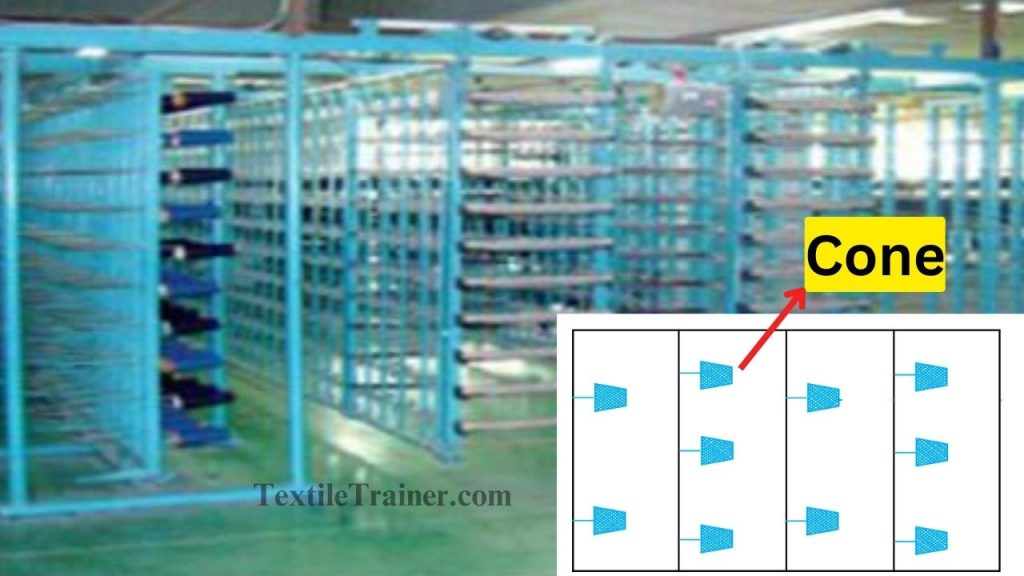
5. Continuous chain creel:
This type of creel is used for holding and feeding yarn cones or packages in the textile industry. It is also known as a chain creel. Continuous chain creels are designed to continuously supply yarn cones or packages to the weaving or warping process. Each loop of the continuous chain creel holds a yarn cone or package. The chains are driven by a motorized system, creating a continuous movement that moves the yarn through the creel. By designing the creel, yarn can be supplied continuously without manual intervention. This type of creel consists of two arms that form an acute angle. As the yarn from the supply package holders forms an endless chain, the exhausted packages are also moved out of the working position.
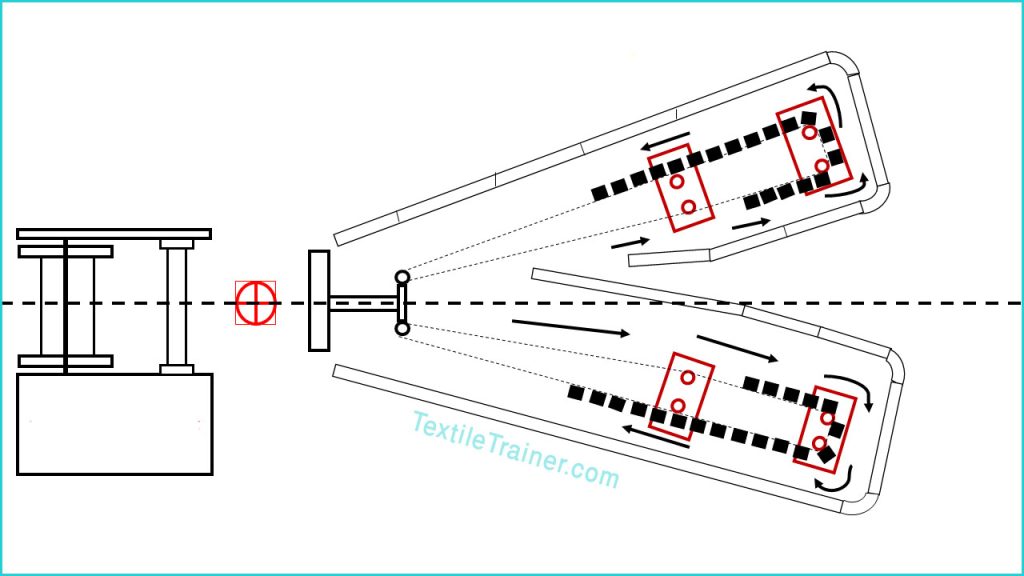
6. Automatic creel:
An automatic creel, also known as an automated creel, is an advanced type of creel system used in the textile industry. It incorporates automation technology to streamline and optimize the process of holding and feeding yarn cones or packages. A key feature of an automatic creel is the integration of motorized or robotic mechanisms that handle yarn cones or packages. Computerized systems control these mechanisms, ensuring that yarns are handled precisely and efficiently. As it is a highly sophisticated creel, it is used for modern warping machines. It is a truck creel with an automatic splice arrangement that takes place automatically as the thread is pushed forward. It is designed to reduce the time it takes to change creels.
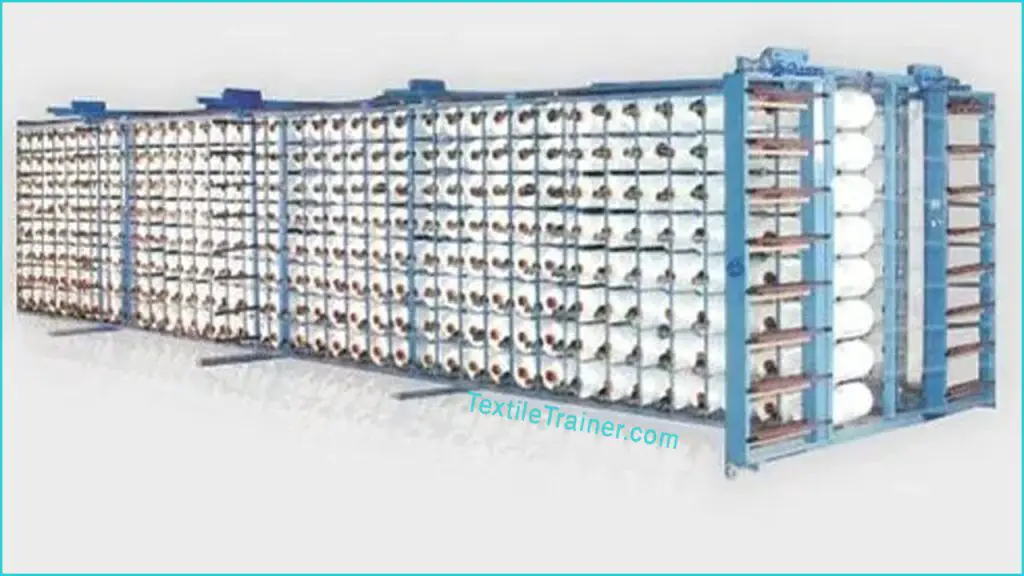
7. Swivel frame creel:
This swivel frame creel allows empty packages to be replaced on either end from the center aisle, and it can be adapted to confined spaces as a foot pedal can be used to pivot the frame 1800 so that empty packages can be rerolled. Swivel creels can come with a v shape as well.
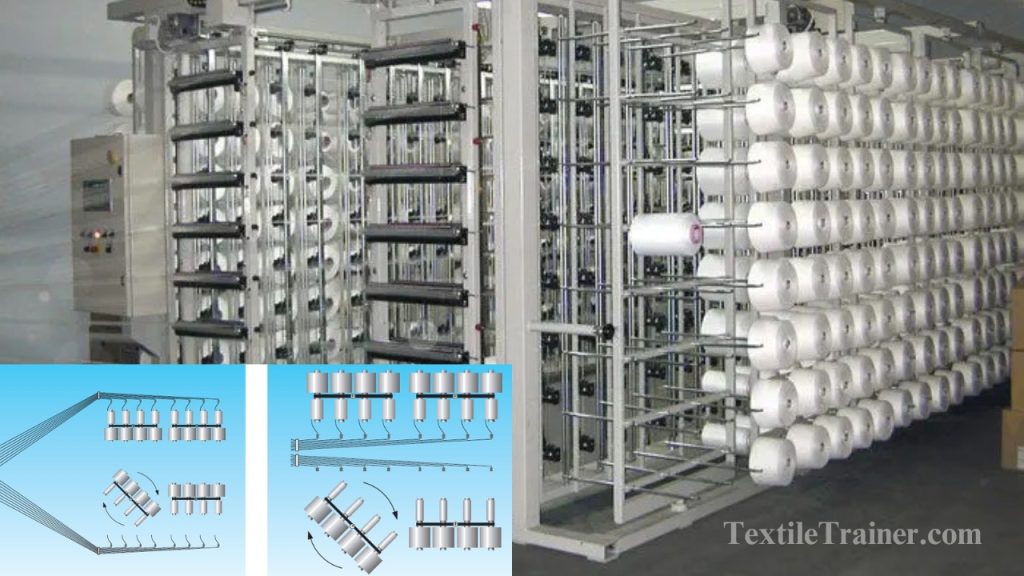
8. Mobile creel:
A mobile creel, also known as a portable creel, is a type of creel that can be easily moved or transported within a textile manufacturing facility. During the warping or weaving process, it provides flexibility and convenience for organizing and supporting yarn cones or packages. Bobbins are set up or creeled on a trolley in this type of creel. When the thread is exhausted on one trolley, the individual trolleys of bobbins are placed one after the other to feed the warping machine. This creel reduces the waiting time for the supply package.
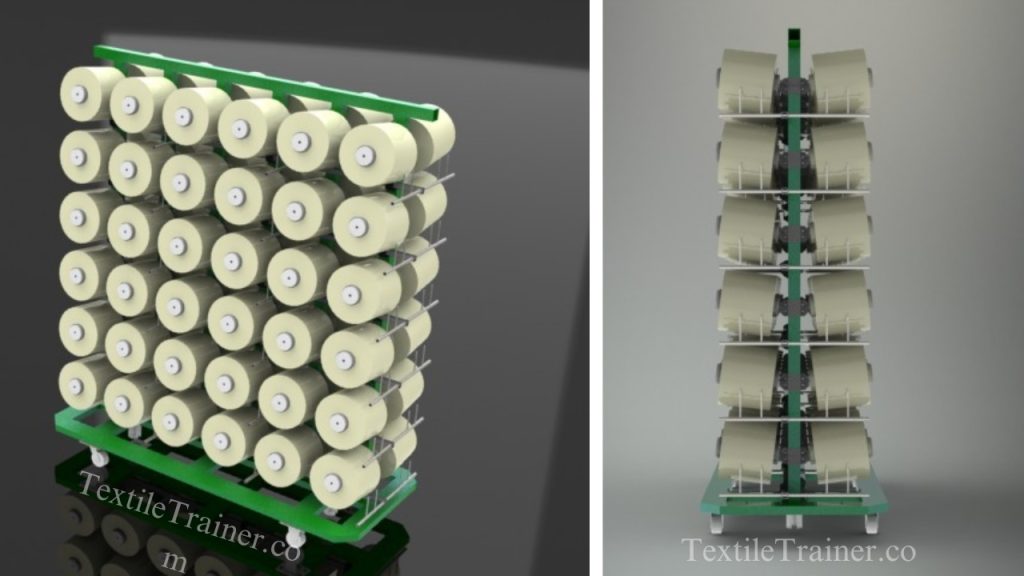
9. Unrolling creel:
In the textile industry, an unrolling creel, also known as a warping creel, is used to feed yarns or threads to warping machines. A creel is a framework that holds several cones, packages, or yarn bobbins in an organized arrangement. Warping elastic yarns with this type of creel involves pulling yarns from these cones and passing them through tensioning devices before they are fed into the warping machine. This unrolled propylene yarn comes with breakers in case the yarn breaks. The packages rotate to make unrolling easier. Positive thread feed can be used to tension the yarn.
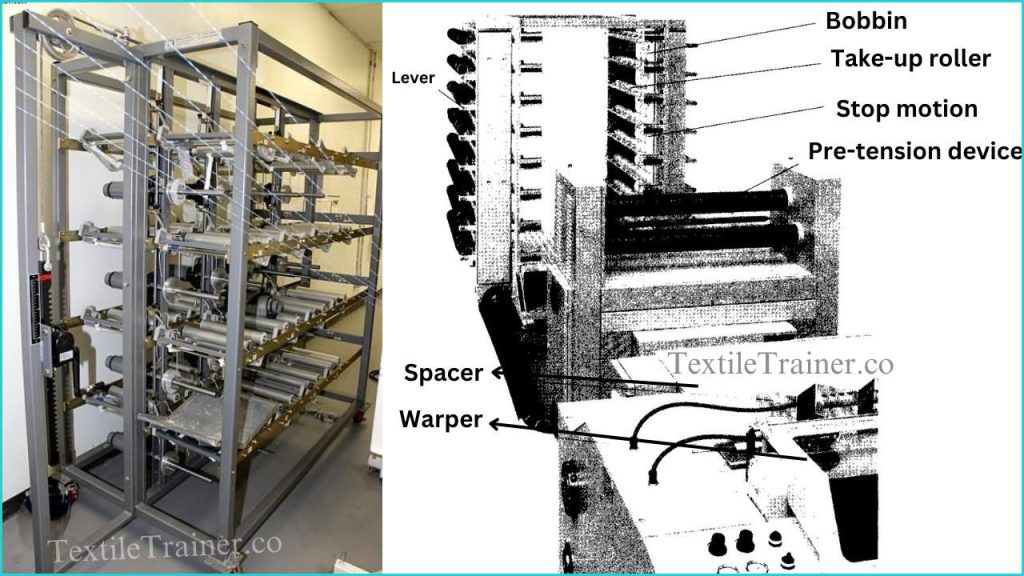
10. Rotating creel:
A rotating creel is a type of creel used in textile manufacturing where the yarn packages or bobbins are mounted on a rotating frame. Generally, a rotating creel is used to ensure a constant supply of yarn to the weaving machine while minimizing tension and preventing tangling and twisting. The bobbins or supply packages are mounted on rotating frames. As shown in the diagram, yarn is withdrawn on the outside. The new bobbins are creeled up from the inside as the yarn is being drawn off. When the outside bobbins exhaust, the frame is rotated and a new bobbin is pulled in. This reduces the stoppage time.
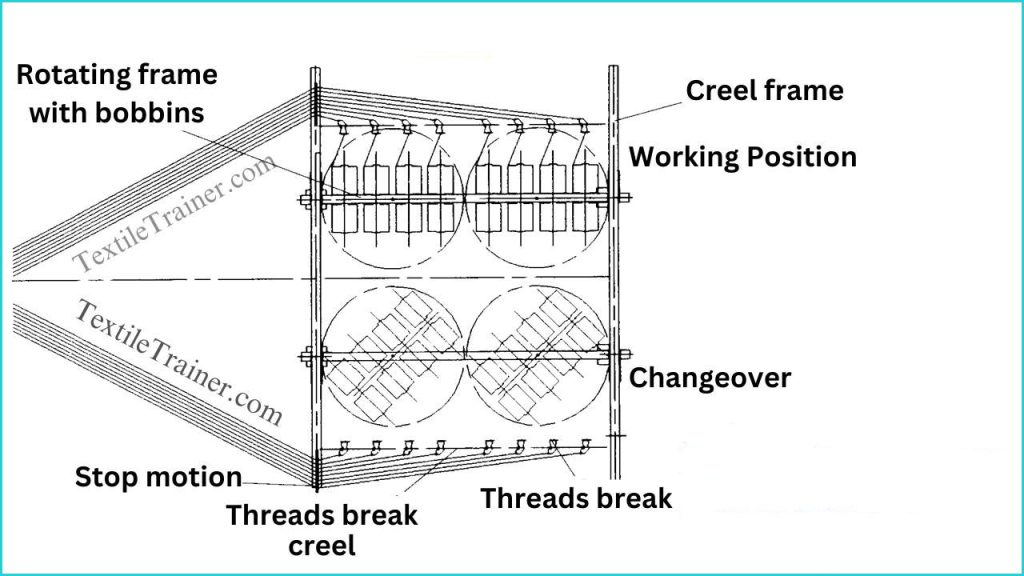
Conclusion:
The creel of a warping machine is crucial to the textile industry because it ensures a reliable supply of yarns to be warped systematically and controlled. It is important to select a creel that is compatible with the particular needs and requirements of the production process. Creels are chosen according to factors such as yarn type, pattern or design, and production efficiency. Utilizing the right creel type allows textile manufacturers to optimize yarn supply, tension control, and overall productivity.
Reference:
- Adanur, S. (2001). Handbook of weaving. Boca Raton: CRC press.
- Belal, P. D. (2016). Understanding Textiles for a Merchandiser. Dhaka: LB Graphics & Printing.
- Hossain, M. S. (2014). Introduction to Textile Engineering. Dhaka: Books Fair Publications.
- Rahman, M. M. (2008). Fabric Manufacturing Technology. Dhaka: Books Fair Publications.
- V. Gordeev, P. V. (1982). Cotton Weaving. Russia: Mir Publishers Moscow.
